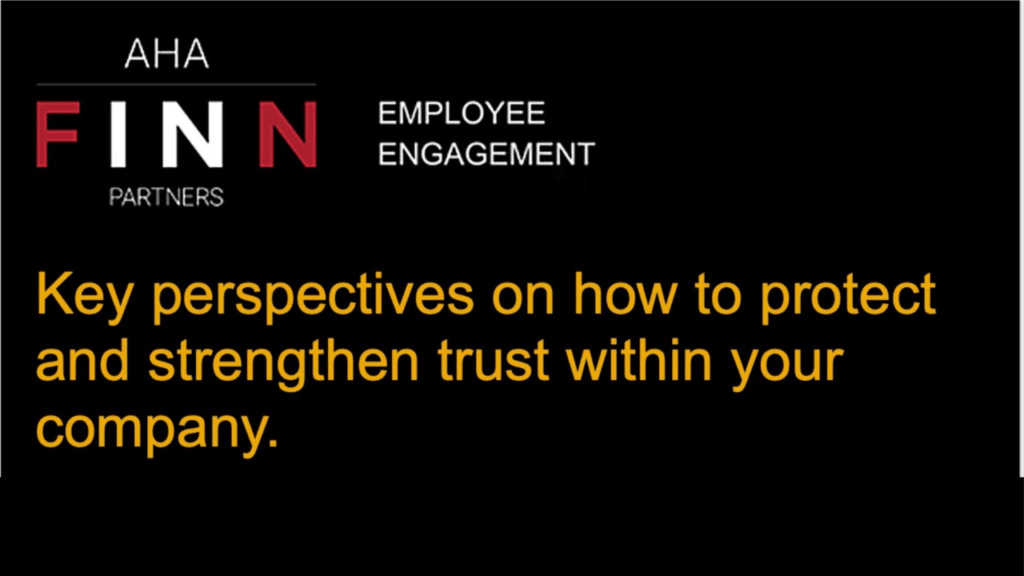How Praxis Came to Represent AHA’s Creative Soul

By Doug Zanger, ThinkNW President and Executive Director
Praxis is a creative anthology and a vital part of agency AHA for the last 22 years. It gives the agency’s employees a chance to stretch their creative muscles and share the poetry, prose, painting, music, video and animation they create outside of the office environment.
Praxis rose from an internal contest AHA used to have, where on Halloween, the staff—at that time nearly all writers—would get together bring ideas for a Christmas card for clients. They would then hire a design firm to create the cards. AHA co-founder Betsy Henning wanted to think bigger, so she had an idea: a book.
The staff loved the idea and used the days before Thanksgiving to pull the creative together. The original book came out in 1998, and the crew hasn’t stopped, citing it as a labor of love.
“We pulled a rabbit out of the hat in that first year in 1998,” said Henning. “The book was 60-some odd pages. And we just haven’t stopped since.”
Each year, the work has been printed, but 2020 brought about new challenges and forced Praxis to bring everything online, with a different tone than in years past. Vanessa Duff has worked at AHA for a decade and has seen Praxis’s growth over the last 10 years. She is a creative director at the agency and for the latest edition of Praxis.
Henning and Duff discuss the history of the creative effort, how it has changed over the years and where the project is headed next.
ThinkNW: What has been the client response to Praxis over the years?
Betsy Henning: People did not expect to get a book written by the people writing their marketing materials. At that time, 100% of us were writers, and most of our writers were published—fiction writers or journalists—so the writing chops in the book were very high, and it earned a fast and well-deserved reputation. Several of the pieces went on to get published elsewhere. So, the clients recognized that, but mostly, what they saw is their agency’s employees’ humanity. They were reading a story about them as a child, or a trauma that they experienced, or a dream that they had, and that reveal of those coworkers as humans, really struck a chord.
We get these love notes (about Praxis). There was someone in the industry that I had a tough time with, but when I shared Praxis with him—which I did reluctantly because I thought he was going to make fun of it—it transformed our relationship. So just seeing the power of it is incredible.
How has the publication evolved, especially from the early days?
Vanessa Duff: I was working on it when it was still just copy. You can imagine how many words—we didn’t have whitespace really; it was just all this amazing, precious copy. And it was fantastic—something to be really proud of.
We started to have that conversation about introducing images. I know there had been sketches or something like that in the past. But the business was changing a little bit, and the design department wanted to really see themselves in it too. This wasn’t just a place dedicated to the written word. There were other ways to tell stories as well, so we invited people to submit visual pieces and, and I got to work on that, redesigned with the art directors at the time to take that leap of faith and reimagine this formula that had been working really well.
Every year since then, we ask ourselves what we can do next? Can we make an app? Can we push this into a digital space where people who want to contribute sound and moving images have a place? We like to use this now as not just somewhere to showcase our craft (that people don’t know about), but a place to actually practice and learn some things that maybe we didn’t know before. As we push into that digital space a little bit more, we get that opportunity.
It’s also becoming a little more inclusive as time goes on. We like to encourage people who don’t necessarily write or do visuals for a living to dabble in that space and venture into it. You get that chance, and we try to make it be a safe place for those different degrees of execution.
How would you describe what the content is and what it means?
Henning: It is stories told, revealed and deconstructed. I intentionally wanted to create something that had a lot of permission to take risks. But we do have to walk this very uncomfortable line between navigating all of those choices.
Duff: Depending on the contributor, everybody’s coming to the table with a different desire. Some people do almost use it as a cathartic experience, like talking about something from their past, for example. Other people want to play, experiment and have some fun. Other people are trying to do a thing that has never been done before.
How do you come up with the themes? What are some over the years that have stood out to you?
Henning: Our themes in the early years were loose suggestions. As the kind of content that can go into practice gets broader, the theme becomes more important as a unifying element. Before, when it (closer to) a literary journal, it was harder to ask writers to centralize around a theme when they were under pressure to do this sort of in their free time.
Duff: (One favorite theme) was actually heroes and monsters, which I interpreted as dark and light, good and bad. It’s two sides of the same coin.
The theme this year (‘Dreams’) felt really important, like no other year before. We put our fingers in the wind to just feel, ‘What is it? What seems right now for where people are people are with their moods, with what people are interested in?’ We needed something hopeful yet not tone deaf at the same time. We wanted to be really careful about the theme.
What were some of your favorites over the years, some of the stories and submissions that still resonate?
Betsy Henning: Sue Sal, the original editor, was just this incredible writer and every one of her stories… it’s just a gut-busting tear-jerker at the set… (or the one) where Vanessa got very vulnerable in a piece, and it was really beautiful.
Vanessa Duff: I’m actually slightly partial to the piece that I did that had all the little tiny drawings in it of everybody’s name.
This is the first year you’ve gone all digital, but are you going back to print? Because there’s definitely something nice about the tactile side of it.
Henning: I love the hard copy and the experience of it. I thought it was really wonderful in digital this year. I don’t have an answer to that question. I suspect we will (go back to a print edition). We will just broaden our perspective of how practices can be experienced and create new ways for audiences and new ways to express yourself for the creators.
Where do you envision Praxis going from here?
Henning: I think everything runs its course in due time. We grew 17% last year, and we’re growing another, practically double for this year. (During the pandemic, there was) an excuse to sunset it if it was time. Yet, I don’t remember that even being considered.
Praxis is supported by a community of readers and contributors, and folks who appreciate it. I suspect it will continue to evolve and be relevant, but it should never be precious. There’s nothing sacred about Praxis. It should reflect who we are and the world we’re living in, and how we are experiencing and processing that world. And if it does that, I think it has a long, long life ahead of it.




